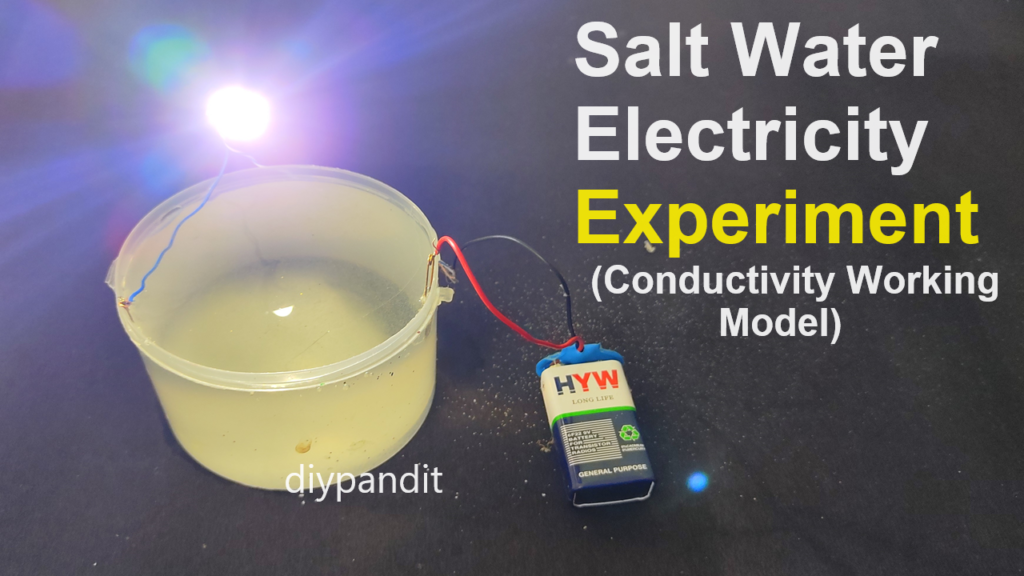Creating a saltwater and electricity conductivity experiment using a 9V battery can be a simple and informative project.
Here’s a step-by-step guide:

Materials Needed:
- Two metal electrodes (such as copper wires or nails)
- Salt
- Water
- 9V battery
- Battery clip or holder
- Wires with alligator clips
- LED (optional, for indicating conductivity)
- Safety goggles (recommended)
Steps by Step Video Instructions:
- Prepare Your Components:
- Cut two pieces of wire, each about 6 inches long.
- Strip the insulation from the ends of the wires to expose the metal.
- Prepare the Saltwater Solution:
- Fill a cup or small container with water.
- Add salt to the water and stir until it dissolves. You want to create a saturated saltwater solution.
- Connect the Circuit:
- Attach the battery clip or holder to the 9V battery.
- Connect one end of one wire to the positive terminal (+) of the battery.
- Connect the other end of the same wire to one of the metal electrodes.
- Connect one end of the second wire to the negative terminal (-) of the battery.
- Connect the other end of the second wire to the other metal electrode.
- Test the Conductivity:
- Submerge the metal electrodes into the saltwater solution.
- Make sure the electrodes do not touch each other in the water.
- Wear safety goggles for protection.
- When the electrodes are submerged, the circuit is complete.
- Observe the Result:
- If the saltwater solution is conductive, you should observe one of the following:
- Bubbles forming on the electrodes, indicating electrolysis of water.
- An LED connected in series with the circuit lights up, indicating the flow of electricity.
- If the LED doesn’t light up, try reversing the connections to the battery.
- If the saltwater solution is conductive, you should observe one of the following:
- Experiment with Different Concentrations:
- Try adding more salt to the solution and observe any changes in conductivity.
- You can also try using other substances like sugar or baking soda instead of salt to compare their conductivity.

